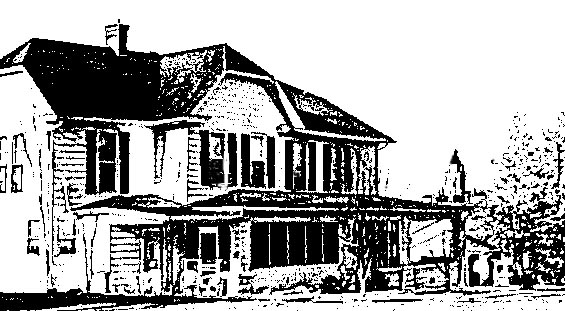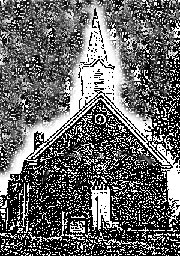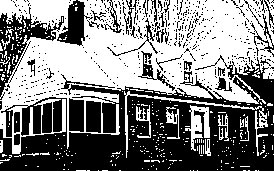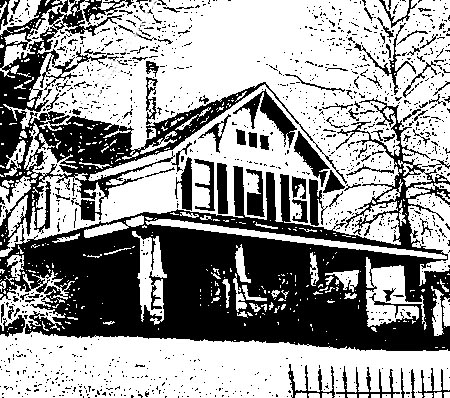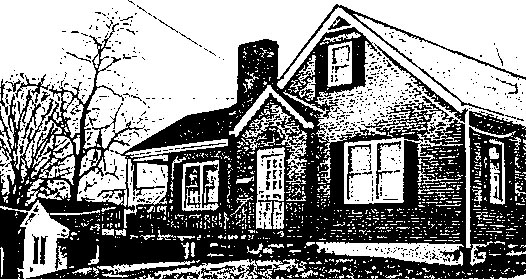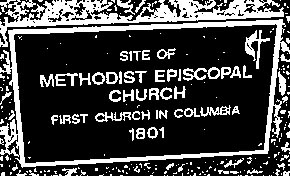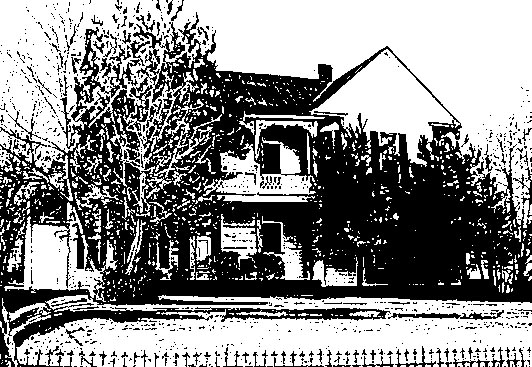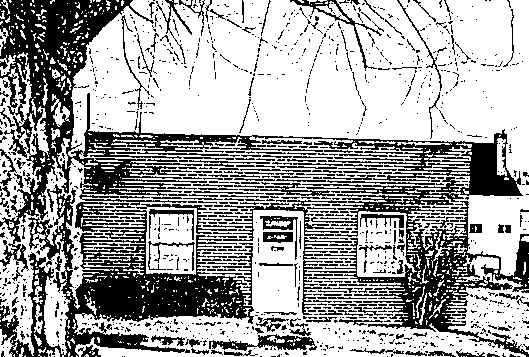| |||||||||||||
Dr. Ronald P. Rogers CHIROPRACTOR Support for your body's natural healing capabilities 270-384-5554 Click here for details 


Columbia Gas Dept. GAS LEAK or GAS SMELL Contact Numbers 24 hrs/ 365 days 270-384-2006 or 9-1-1 Call before you dig Visit ColumbiaMagazine's Directory of Churches Addresses, times, phone numbers and more for churches in Adair County Find Great Stuff in ColumbiaMagazine's Classified Ads Antiques, Help Wanted, Autos, Real Estate, Legal Notices, More... 

|
Walking Tour Of Columbia: Part I This article first appeared in issue 12, and was written by Vonnie Kolbenschlag. 7. The Male and Female (M & F) School built in 1854 by the Columbia Joint Stock Company once topped the hill. It was first called the Columbia Institute. The principal of the school was Reverend McKee, who was also the first pastor of the present Presbyterian Church on Burkesville Street, and later, Vice-president of Centre College for many years. He lived at the Field House (#4) at the time he was principal. During the Civil War schools and most churches were closed; this was a severe setback for education in Kentucky, which had no sustaining tax base and no provisions for teacher training. Illiteracy was prevalent. The M & F School opened in 1865 indicating that an education system was reestablished soon after the war. In 1909 the first public high and graded school in Columbia was built on this location. It incorporated the M & F School as the auditorium. High school students seeking a formal education and living beyond Columbia would board with families in the city during the school term; there was no bus service, and roads were often impassible. Only a small percentage of the county's children attended. The only organized sport was boys' basketball. In 1912 primary education in Kentucky was made compulsory. Many small segregated schools were built throughout the county. A combination elementary and high school for African American children was located on Burkesville Street. In 1953 it burned down. The Adair County Board of Education denied these students access to public schools. The Day Law (1904) had made coeducation of white and black students unlawful in Kentucky. The parents of the African American students formed a chapter of the NAACP and took the matter to court in Louisville. In 1955 it was the first suit in Kentucky to force desegregation. Thurgood Marshall (later a Supreme Court Judge) was one of the attorneys. The decision granted the right of the African American students to attend the public schools. Despite the problems at first, transition went smoothly. In 1959 there were 101 schools in Adair County. From 1958 to 1962 schools were consolidated, and new schools were built on Greensburg Street. The Columbia High and Grade School closed as a school building, but was used as a sewing factory, then razed in 1994. In 1944 during World War II the Adair Cannery was begun in the school building for use by the community. It was declared one of the best run economically and had the largest list of patrons of any of the canneries in Kentucky. People brought their fruits, vegetables and meats and used the cannery's equipment and advisors to preserve foods. Since there were no government commodities, food for school lunches came from people who donated food and labor to can it. 8.* Davis House. Turn and walk toward the traffic light on Burkesville Street; You will pass a large house on your left, built at the turn of the century and occupied by the Davis family who owned a hardware on the Square from 1920 until 1954. On the lot adjoining the Post Office a house stood in 1852. It belonged to Thomas Bramlett and his family. He was U.S. District Attorney for Kentucky, a good friend of Lincoln's, Colonel in the Union Army (3rd KY Volunteer Infantry Regiment), and the Governor of Kentucky immediately following the war. He moved to Louisville after his term as governor. Pass the Post Office built in 1962 and look to your left before you cross Burkesville Street. 9.*1857 Union Presbyterian Church *Kentucky Landmark* This is the oldest church building in town. It sits just beyond the original town limits. Built as the Columbia Presbyterian Church, it became the Union Presbyterian in 1961 when another congregation joined it. In 1857 the sanctuary had a balcony for slaves and a raised chancel. The attic was used during the Civil War as a lookout and a place to make bullets. The church was used as a temporary hospital for wounded soldiers in several nearby skirmishes. In 1885 the church was remodeled. The balcony was removed. In 1908 the original plain or frosted glass windows were replaced with Gothic style stained glass memorial windows. A kitchen, restrooms, classrooms, and fellowship room were added in 1956. The hand chiseled limestone steps at the entrance are originals. 10. *1948 Next to the church is the manse, home of the ministers of the church. Its first occupant, Reverend Albert Capwell Wyckoff, was also author of adventure story books. He wrote three out of a total of 30 books while living here from 1948 - 1953; Bright Horizons, Bells Are Ringing, and Winning of Kay Slade. 11. Next to the manse is a large white house built by Henry Miller. He was active in organizing the First National Bank (1903) and president when he died in 1942. In 1898 he and a partner had installed and managed the first telephone system in Columbia and parts of Adair County until 1928 when it was sold to Southern Continental Telephone. Local operators made connections from a switch board until 1952, when it changed to automatic dial operation. 12. Across Guardian Street is a large white house with a black picket fence. This was once the home of George A. Caldwell, son of William, one of the founders of Columbia. George was a U.S. Congressman 1843-1845 and 1849-1851. He was a Colonel in the Mexican War, and was head of a law firm with two of his brothers in Louisville. One brother was the third president of the University of Louisville. This was the Presbyterian manse from 1925 - 1948. 13. Continue on Guardian. On the left corner of Monroe is the home of the late Dr. James Salato, a much respected country doctor. The Adair Health Department is named in his honor as is the 1995 Salato Wildlife Education Center at the Kentucky Department of Fish and Wildlife Resources in Frankfort. He was one of the founders of Columbia's first and only Catholic Church, Good Shepherd. 14. *1801 Methodist Church site Next to the Salato home, a plaque in the stone wall indicates the site of the first church built in Columbia. This Methodist Church was visited by Bishop Asbury, sent to America from England by John Wesley, founder ofMeth-odism. This church served as a school building in the 1850's. Union soldiers destroyed the building in the late 1860's. The congregation built a church on Burkesville Street in 1872. It was replaced in 1963 by the present church built on the same site. 15. Opposite the 1801 church site is a brick building which was a doctor's clinic. 16. The building behind was the Columbia Dairy processing center, a place where farmers brought milk to be bottled and delivered to homes in 1947 to 1960. Housewives would leave a note indicating what and how much milk to leave. After use, the empty glass bottles would be placed outside the door to be picked up by the "milkman." Glass bottles were filled with milk and placed into partitioned crates. The crates for the bottles were wooden and very heavy even when empty. The crates were loaded in trucks and deliveries made. The milkman would pick up from the homes the empty bottles which were returned to be cleaned and filled again. Notice the old gasoline pump by the road. This story was posted on 1997-03-01 12:01:01
Printable: this page is now automatically formatted for printing.
Have comments or corrections for this story? Use our contact form and let us know.
More articles from topic Articles from the Print Edition:
Sulphur Well Had Its Own Version Of Thoreau Old Sulphur Well Kentucky Breeding Residents Signing Petitions To Keep Town From Being Bypassed Ted Turner Says He'll Make bear Road A Big Bear President Morris Butler Of People's Bank & Trust Appoints Large Loan Vp Bypass Town Meeting Constructive First Giles Foundation Newsletter Is Published The Wisdom Of Joe Moore: Telling Drinks Is Not So Hard The Adair Heritage Association Memberships For 1997 Now Due View even more articles in topic Articles from the Print Edition |


|
|||||||||||
|
| |||||||||||||
|
Quick Links to Popular Features
Looking for a story or picture? Try our Photo Archive or our Stories Archive for all the information that's appeared on ColumbiaMagazine.com. | |||||||||||||
|
Contact us: Columbia Magazine and columbiamagazine.com are published by Linda Waggener and Pen Waggener, PO Box 906, Columbia, KY 42728. Please use our contact page, or send questions about technical issues with this site to webmaster@columbiamagazine.com. All logos and trademarks used on this site are property of their respective owners. All comments remain the property and responsibility of their posters, all articles and photos remain the property of their creators, and all the rest is copyright 1995-Present by Columbia Magazine. Privacy policy: use of this site requires no sharing of information. Voluntarily shared information may be published and made available to the public on this site and/or stored electronically. Anonymous submissions will be subject to additional verification. Cookies are not required to use our site. However, if you have cookies enabled in your web browser, some of our advertisers may use cookies for interest-based advertising across multiple domains. For more information about third-party advertising, visit the NAI web privacy site.
| |||||||||||||
























